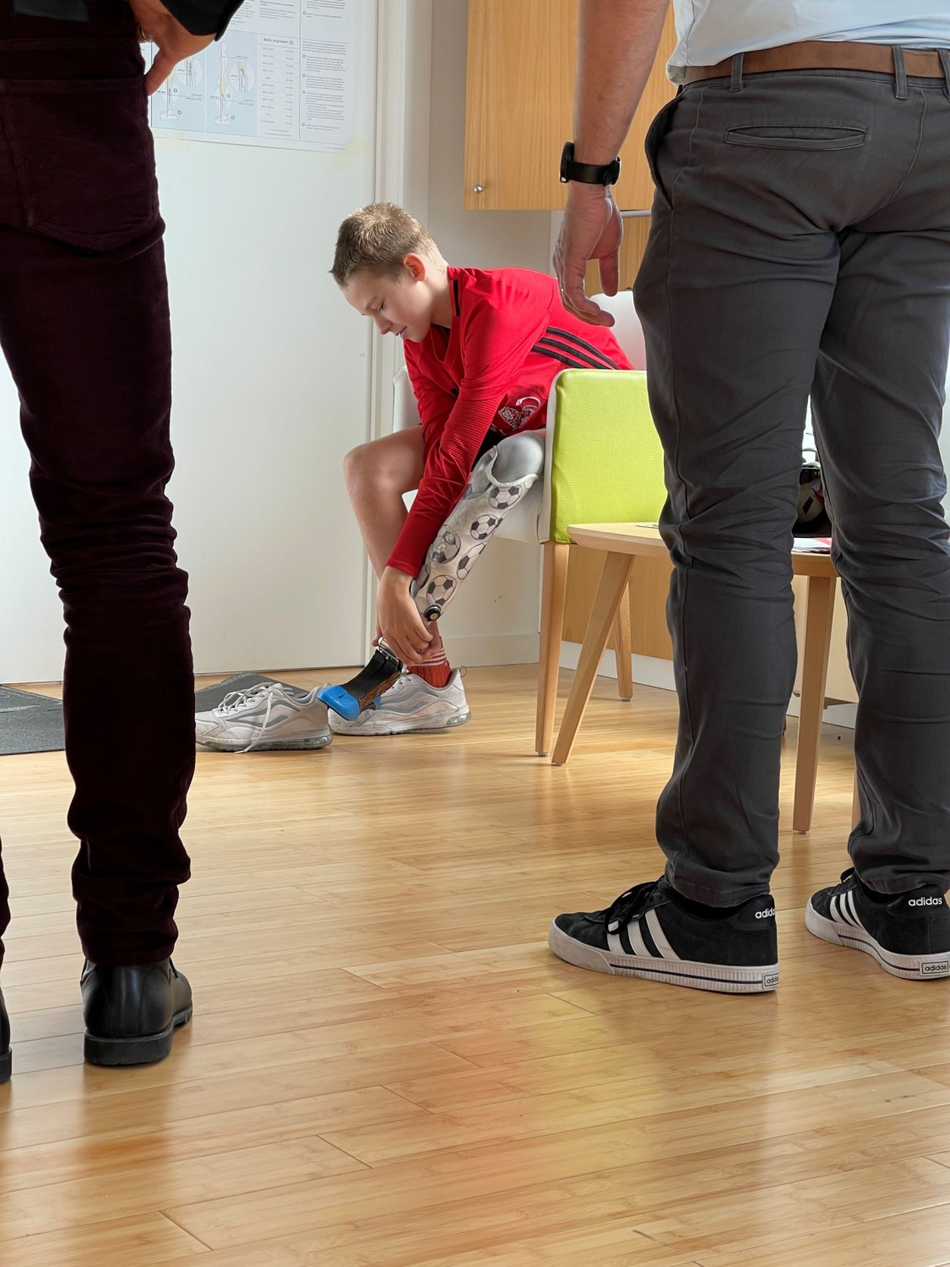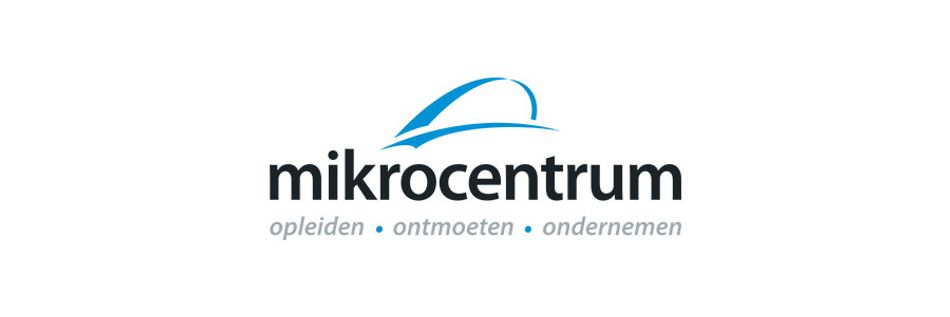Revolutionizing prosthetics for kids: A modular approach that grows with the user
Research from elite athletes informs the design of these robust and adaptable prosthetics. We interview researcher Tijmen Seignette, about his ambitions to change how we approach prosthetic design.

Image credit: Project Unlimited
A groundbreaking 2020 research project led by Delft University of Technology and Gyromotics delved into the unique requirements of children using lower limb prosthetics. The findings highlighted that youngsters are more prone to damaging their prosthetic devices due to their active nature. Furthermore, the study emphasized the need for greater adaptability in children's prosthetics, as growth spurts can cause the devices to become overly rigid or excessively flexible.
The results of the study inspired Tijmen Seignette, a researcher at TU Delft, to look for ways to make children's prosthetics more robust, comfortable, and adaptable as they grew.
Tijmen pitched his graduation project titled 'Measuring Ground Reaction Forces in Running Specific Prostheses - A Fiber Optic Sensing Approach,’ where he designed a sensor system for running specific prostheses together with Photon First and Gyromotics. His system can be used to improve sprinting performance of Paralympic athletes, as well as validate prosthetic design choices. Seignette submitted his research to the Precision Fairs Boost Your Talent Awards, where he won the $5000 Wevolver award. [2] The Precision Fair is organized by Mikrocentrum.
We recently sat done with Seignette, to talk about what his project is now and how he sees the future of prosthetics.
When did the project get started? What was your motivation, and what did the early iterations look like?
The Ground Reaction Force measurement project on prosthetics started in the summer of 2020 as a graduation project for my Master's thesis at the Biomedical Engineering department at the Delft University of Technology. In a previous graduation project, a design for a novel prosthesis was made. However, no validation method for this design was readily available. Therefore, in the project, I set out to design a measurement system that would allow for GRF measurements during running, as these forces are very important parameters in efficient sprint running.
Early iterations of the instrumented prosthesis were based on FBG shape-sensing prototypes that I got acquainted with during my internship at PhotonFirst in Alkmaar, the Netherlands. During this internship, I learned how to perform calculations on deformations in (composite) materials using optical sensors. I also learned how to apply FBGs in several other fields, and thus got to know which limitations, but mostly which opportunities these kinds of sensors have in several fields of applications.
Ewoud Velu, an engineer at PhotonFirst, helped me to create the FBG-instrumented prosthetics. We first made a prosthetic that would allow for rudimentary measurements, and to see if our method of applying sensors to the surface of the prosthetic would work as expected. Of: At PhotonFirst, Ewoud Velu, an engineer, collaborated with me to develop FBG-instrumented prosthetics. We began by creating a basic prosthetic to conduct initial measurements and test the effectiveness of our sensor application method on its surface. The next step was to integrate the sensors into the prosthetic so that it could be used by an athlete for field tests.
How important was winning the Precision Fair’s Boost Your Talent Award? What doors did this open?
The Boost Your Talent award helped me build a professional network in the engineering field. This helped me find the right people to help us further develop the product that I am currently working on in Project Unlimited. Because of winning the award, we were also introduced to the Composites Engineering Challenge by Mitsubishi Chemical, in which we won the Innovation Award for the most disruptive and innovative project within our field.
In addition to this, my project will also be published by professional magazines such as the Mikroniek, which means that the project will gain more attention in the professional field of sensors and fine mechanics. Of: Furthermore, my project will also be featured in professional magazines such as Mikroniek. This will increase its visibility within the professional field of sensors and fine mechanics.

Project Unlimited involves the end users throughout the whole design cycle. Image credit: Project Unlimited
What impact did winning the innovation award for the Composites Engineering Challenge have?
By winning the award, we got international attention for the problems and inconveniences that children with an amputation face on a daily basis. We got the opportunity to publish articles in multiple magazines and blogs so that we could communicate what problems we are tackling by creating a new prosthesis. As a team, we welcome this because one of our research project's goals is to raise awareness about children who use a lower leg prosthetic.
We will also receive help from Mitsubishi Chemical in exploring suitable materials and production methods to find the right material properties that we are looking for. We are also looking into scaling up the production for the modular prosthesis, which is very helpful for our project; within our project group, we do have a lot of knowledge on prototyping and small-scale production of composites but not in larger series production. Getting help from a large company with a lot of experience in scaling the production method will have a large impact on the project.
Additionally, we are detailing our service model and business model for our prosthesis - for now, mainly for the purpose of the Dutch market. Mitsubishi will help us find the right people to further develop these aspects of our project.
What's next for you and the project?
In the coming months, we will do multiple iterations of our current modular prosthetic design, so that, eventually, we will have a prosthesis that we know will be safely usable for an extended period. We will then launch a testing trial with multiple orthopedic technical companies so that about 20 children will be provided with a prosthetic foot. From these tests, we will gather data to further develop our product-service system and eventually do a market introduction under the Gyromotics company in the Netherlands.
We will also be working on awareness about children with a foot prosthetic, for instance, by developing presentation material that can be used by children in primary schools to tell their peers about prosthetics, and we will attend technical/educational events to showcase our progress on the design of our foot. For me personally, my role in the research project is almost finished, and I will be on the lookout for a new professional challenge in the field of medical design/R&D. On the side, I will still be helping out the Project Unlimited team, where I can.
What resources or input are you looking for now?
For Project Unlimited, we want to explore the implementation of our product into the market.
Since we have a complicated stakeholder structure in our project (lots of people are involved in providing prosthetics for children; the child, the parents, orthopedic technicians, rehabilitation doctors, insurance companies, etc.), we need to get everyone involved in the service design so that we can provide every child with a lower leg amputation with the right prosthetic foot, for the right price.
For this service design and the detailing of the business model, we are also working together with Mitsubishi Chemical, but it is always nice to know of other projects that apply a similar approach to healthcare and see if we can learn from these projects as well. Personally, since I will be looking for a new professional challenge, I am mainly looking for a role in a project that involves a disruptive product/service in the healthcare field, as I think I can apply the knowledge I gained in my previous work well in this field.
Read more about Mikrocentrum:
Mikrocentrum is the connecting platform for the high-tech and manufacturing industry. We have a fascination with technology. And as an independent foundation, we are uniquely positioned to establish the right connections to translate that fascination into all layers of the value chain. Together with our members, customers, and partners, we are committed to a strong innovative ecosystem, talent development, and addressing the major societal challenges of today. We do this by providing education, stimulating meetings, and connecting through our courses, events, and member platform. Because with knowledge, talent, skills, and connections as fuel, we are making the world of tomorrow a little better today.
About the Precision Fair:
The Precision Fair is the annual trade fair for the entire precision technology value chain, ranging from mechatronic engineering & systems, metrology, vacuum & clean, micro processing & motion, laser & photonics, to production for high precision.

